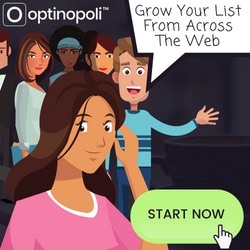Marketing is of course central to business growth and success, and it’s a fast-changing scene. One of the most important changes over the past 12 months is that there is far less distinction between online, digital marketing and more traditional, offline marketing.
As online access and smart phone usage has become ubiquitous and central to most people’s lives across the world, it’s now all just marketing.
Regardless of your type of business, if you want to reach prospects and customers, you have to be where they are. And they are everywhere, and across multiple devices.
The only way to reach them effectively is through content. Content allows you to be where they are, to attract them through ‘pull’, inbound marketing, to build up trust and relationships.
This is of course content marketing – using content for marketing purposes. According to Seth Godin, content marketing is the only marketing that’s left. Those businesses still ignoring it are ignoring marketing and will struggle.
So with content marketing central, how’s it shaping up for the next 12 months?
Here are my key content marketing predictions for 2016…
 The Importance Of Your Own Website Will Slide
The Importance Of Your Own Website Will Slide
Don’t worry, your website isn’t going anywhere and will remain crucial as a key online focal point for your business…
But the importance of it will slide in terms of attracting and building up relationships with customers.
The key point is that your website is becoming less important than your overall ‘web presence’.
It’s about putting your content where your customers are, and not always expecting them to come back to your site.
Websites aren’t as important as they used to be… The internet of 2016 will be different. We’re already seeing digital native publishers leave the comfort zone of their own websites and go to where their audience is.
HotwirePR, Communications Trends Report 2016
As a trend, it’s becoming more difficult to get users to leave the platform they’re on and click through to your site. They want to stay where they are.
This is partly driven through the inexorable rise of smartphone and tablet usage. They want to stick with the particular app they’re consuming your content on.
Putting your content where they are – in addition to your own website – is key.
The majority of your target audience haven’t visited your blog yet. They’re on Slideshare, YouTube, Docstoc, and other content platforms. You’ve got to be everywhere they are.
Neil Patel, neilpatel.com
Importantly, social platforms are morphing into content repositories, further encouraging your marketplace to stay put:
- LinkedIn Pulse has been adopted by increasing numbers of marketers through 2015.
- Facebook Notes became available over the past few months for longer content pieces, along with Instant Articles for larger publishers (though I’d expect a larger rollout over time).
- Google+ already provides micro-blogging capabilities.
- Even Twitter has apparent plans to allow content beyond its usual 140 character limit.
So how exactly to you expect to put content in different formats in all these different places in order to reach your prospects and customers?
The answer lies in #2 Content Repurposing, as follows…
 Content Repurposing Will Become A Key Part Of Any Content Marketing Strategy
Content Repurposing Will Become A Key Part Of Any Content Marketing Strategy
The most practical, effective and efficient way to ensure your content can be in all the right places is through content repurposing.
Content repurposing involves altering an existing piece of content for publication on a new platform and/or in a new media or format.
Any piece of content can be repurposed in this way. Here are just some ideas:
- A video can become textual content for publication elsewhere and audio content e.g. for a podcast
- A Slideshare presentation can become a video
- A blog post can become shorter content pieces, or converted into a presentation (and from there, to video) or audio content
NOTE: See my Be Everywhere Blueprint for an integrated repurposing strategy you can start using today.
You don’t have to create content, day in, and day out. You just have to work on getting the content you already have… in the hands of more people.
Derek Halpern, Social Triggers
As it becomes increasingly necessary to be in front of customers ‘everywhere’, the use of content repurposing will become central to any successful content marketing strategy.
 Content Marketing Will Hit The Mainstream
Content Marketing Will Hit The Mainstream
As we head through 2016, content marketing will finally hit the mainstream and become the key marketing strategy for businesses everywhere.
Indeed, recent research found 75% – three quarters – of businesses will be prioritizing content marketing in 2016.
They know it works and have confidence in its effectiveness. Here are the results of a survey that looked into which single digital marketing technique business owners and marketers expect to make the biggest commercial impact for businesses in 2016 (SmartInsights):
Clearly, content marketing is way in front, along with marketing automation. In fact, it’s judged six times more strongly than Paid search marketing, languishing at 3%.
And look at how interest in content marketing has exploded over recent years:

Further driving this trend is the increase in ad blocking technologies, with consumers willing to pay to avoid seeing ads on their devices. This is push marketing, which there is increasing resistance to.
In contrast, content – or inbound – marketing is pull marketing, and gives your audience what they want. You attract customers to you, and build trust and relationships.
 The ROI of Content Marketing Will Be Increasingly Transparent
The ROI of Content Marketing Will Be Increasingly Transparent
One of the key objections to content marketing has been with respect to proving the ROI (return on investment).
With ads for example, you can easily track click-throughs and resulting conversions, giving you clear ROI statistics.
With content marketing, it’s always been more difficult to measure it in exact terms. However, the tools to measure the ROI from content marketing are becoming more sophisticated and make the ROI increasingly transparent.
Clear, positive ROIs from content marketing will drive content marketing budgets higher, make campaigns increasingly effective, and attract more businesses to adopt and prioritize content marketing.
Here are just some stats already produced relating to the ROI of content marketing:
- Leads resulting from your content can be up to 9x easier to convert. For example, research from Search Engine Journal found leads from ads have a 1.7% close rate, whereas for leads coming from search (i.e. your content on the search engines) the close rate is 14.6%.
- Demand metric found that content marketing generates 3 times as many leads as traditional marketing per dollar spent.
- Other research found the average cost per lead through content marketing was less than half that of traditional outbound marketing activities.
So easier to convert… cheaper… more effective… It’s easy to see why content marketing is gaining such ground among all types of businesses.
Going forward into 2016 things will have to change if you want your business to be successful… Embrace the reality that the way in which your business communicates with your potential customers will have to change if you want to be relevant and differentiate your business in the 21st century.
Chris Marr, The Content Marketing Academy
 Native Advertising Will Rise In Prominence
Native Advertising Will Rise In Prominence
This will be driven partly by concerns over ad blocking, along with difficulties of achieving reach through organic means alone, and increasing acknowledgement of the effectiveness of using content to connect with and engage customers.
Native advertising is the same as advertorial content you might see in offline printed magazines and newspapers. It looks the same as other content on the platform (i.e. native), but an advertiser is promoting it to gain more eyeballs.
According to Wikipedia:
Native advertising is a type of online advertising that matches the form and function of the platform on which it appears.
Examples include boosting a post on Facebook, promoting Tweets, and using networks like Outbrain and Content.ad.
Use of native advertising can be highly effective for reaching new audiences without those audiences feeling like they are being sold to. It takes advantage of pull marketing, while allowing you to scale.
 Video Content Will Continue Its Upward Trend
Video Content Will Continue Its Upward Trend
With Facebook Live enabling live video streaming in news feeds, and Twitter doing similarly on their platform, video content will only increase in prominence.
Here are some stats from a survey of 600 marketers by ReelSEO:
- 93% of marketers use video…
- 70% will increase their video budget…
- 82% confirmed video was positively impacting their business.
Furthermore:
- Cisco claims video will account for 69% of all internet traffic from consumers by 2017, with video on-demand traffic alone almost trebling.
- Research from Nielsen shows 64% of marketers are expecting video content to dominate their marketing strategies.
- According to a recent report in The Guardian, video is the future of content marketing.
So all the signs are video will only increase in popularity, and should be a key part of your own content marketing activities.
 Social Media Marketing As A Standalone Strategy Will Decline In Relevance
Social Media Marketing As A Standalone Strategy Will Decline In Relevance
Let’s be clear. Social media marketing isn’t going anywhere. But the idea that it can be useful on its own and separate from a comprehensive content marketing strategy will look increasingly nonsensical.
After all, it’s difficult to be social if you have nothing to say.
By implementing a sound content marketing strategy, you feed, sustain and grow your social media presence. It’s difficult to build up an audience, together with credibility and authority, unless you have that continuous content output.
In turn, social media is a key distribution outlet for the publication of content, through which you can also engage and connect with your audience, and gain wider visibility.
However, social media marketing is too often regarded as the central focus – as a standalone strategy – with content treated as an irritating distant cousin that you have to deal with occasionally.
This is mixed up thinking.
Instead, social media marketing only becomes effective when fully integrated as part of a comprehensive content marketing strategy. It means you have content to share, value to add, and allows you to clearly define your reason for existence.
If you’re on social media for business purposes but missing the content element – or mistakenly only using push marketing-style promotional content – it’s largely vanity and will prove ineffective.
Content marketing together with content repurposing (see #2 above) gives you a continuous supply of suitable content in a cost effective way.
As content marketing continues to grow in prominence, the real value of social media as part of a proper content marketing strategy will become clear.
In Conclusion
So there are my 7 predictions for content marketing as we head into 2016.
Consider your own plans over the next 12 months for using content effectively to build traffic, leads and sales for your business. It’s a great time of year to plan where you want to be in a year’s time.
NOTE: Here’s a quick list of top content marketing statistics you should be aware of when planning your content marketing – it’s a free download of a single page, printable PDF.
One final prediction. Content marketing isn’t an overnight fix, and takes work. But if you start content marketing now, this time next year you’ll enjoy looking back and seeing how far you’ve come and what you’ve achieved.




